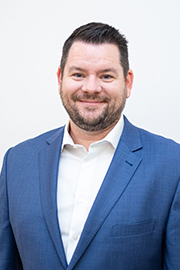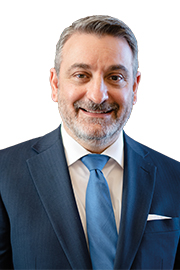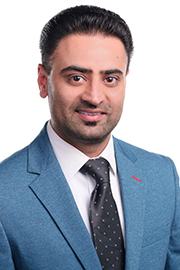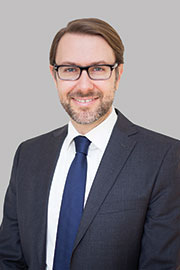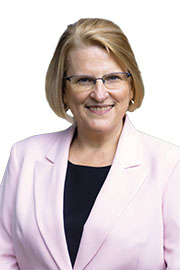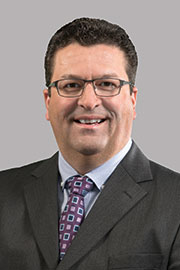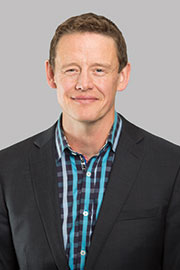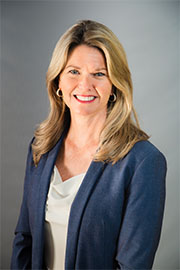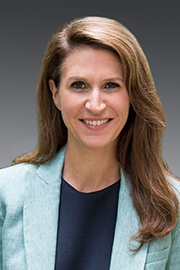- Aug/24/22 10:30:00 a.m.
It’s always a pleasure. I got a note this morning to let me know that Miss Barbara was going to be watching us on TV this morning from Kitchener.
It’s great to see you, Barbara.
- Hear!
- Rabble!
- Aug/24/22 10:30:00 a.m.
I’d like to welcome one of my best volunteers, Matthew Sawaya, who is here again in the members’ gallery.
It’s great to see you, Matthew. Thank you so much for being here and for being part of our youth council.
- Hear!
- Rabble!
- Aug/24/22 10:30:00 a.m.
The changes that we are making in the more beds, more choice act are very clear: We are trying to ensure that people can get into long-term-care homes where the quality of care is better for them, full stop. I don’t think anybody disagrees that when somebody is in hospital and they’ve been discharged from the hospital, the better quality of care for them—where we can give them better services, where they can be closer to their family—is in a long-term-care home.
The member opposite references a tool that has been in the tool box for hospitals since 1979.
Ultimately, what we are trying to do, the changes we are suggesting and, hopefully, that this Legislature will pass will help us deal with the challenges of acute care; will help residents, like the one she is talking about, get a better quality of care in homes and communities close to their homes, while leaving them on the waiting list for their preferred choice. Doctors agree with this; hospital administrators agree with this, and I hope the opposition does—
What are we actually trying to do? What we’re trying to do is give people who are in acute care in hospitals who are waiting for long-term-care beds more options. We know—experts agree, doctors agree, hospital administrators agree—that the best place for somebody who’s waiting for a long-term-care bed is in a long-term-care home. It is about providing better services, better quality of services for a person waiting for long-term care. That is why we are providing for additional resources so that somebody doesn’t have to be transported back and forth, whether they need kidney dialysis—Behavioural Supports Ontario is getting more resources.
I hope the opposition will join with us, help us. Ontario’s long-term-care system can be part of the solution of the acute-care problem in this province that has existed for decades. Join with us, because it’s better for the patients and it’s better for—
- Hear!
- Rabble!
- Aug/24/22 10:30:00 a.m.
I’m honoured to rise for the first time to give my member’s statement in the 43rd Parliament.
I would like to thank the Association of Municipalities of Ontario and the city of Ottawa for hosting this year’s AMO conference. The AMO conference presents an opportunity for the provincial government to have extremely productive meetings with our municipal partners. These vital discussions are influential in securing the ongoing and future success of our province. Municipal governments get the opportunity to individually meet the various ministries and discuss important, relevant topics specific to their communities.
Through AMO, Ontario’s 444 municipalities work together to achieve shared goals and meet common challenges.
Investing in our local communities remains a top priority for our government, as we know how important it is for the people of Ontario to have investments that will promote their health and safety.
The government is building Ontario’s future by investing in health care, infrastructure, education, community safety, and transportation in municipalities across the province to best serve their individual needs and improve quality of life for residents. Our government, alongside our municipal partners, will continue to get it done for the people of our great province. We will leave no stone unturned to make sure that we will continue to deliver for the people of Ontario.
- Hear!
- Rabble!
- Aug/24/22 10:30:00 a.m.
I am so proud to welcome my one-year-old son, Ilija, my four-year-old son, Aleksandar, and my wife, Aleksandra.
- Hear!
- Rabble!
- Aug/24/22 10:30:00 a.m.
I just want to welcome Mrs. Stevens, who is going to be here. She’s a small business owner from my riding.
- Hear!
- Rabble!
- Aug/24/22 10:40:00 a.m.
As part of the delegations at the Association of Municipalities of Ontario meetings last week, I actually met with the Guelph-Wellington organization to talk very specifically about their paramedic service.
There is no doubt that our paramedics are doing exceptional work in community, which is why we have announced, as part of our investments, to expand the community paramedics program, because we see it as an opportunity for, first and foremost, making sure that people get the care they need in their own homes, when it is appropriate. Frankly, it also allows us to ensure that when those paramedics get those emergency calls and need the ambulances, they are available to ensure that they get to the emergency departments quickly and get that service.
The hugely successful 911 models of care: Patients are being diverted from emergency departments through these models and receive the care they need 17 times faster. The satisfaction rate is in the 90s. And 94% of the individuals who are served through these models of care are not, in fact, going to emergency.
These innovations are working. These opportunities to work with all partners, again, whether they’re in hospital, long-term care, in community or through our paramedics, are making our system smoother and better.
We have, of course, as a government, already added 400 additional physicians who are working in remote and northern communities and ensuring that they have the coverage they need.
We have launched a new provincial emergency department program. It’s a peer-to-peer program that provides additional on-demand, real-time support and coaching from experienced emergency physicians to aid in the management of patients presenting to rural emergency departments.
If the member opposite has an innovation or an idea that he would like to bring forward, I am happy to look at and review those.
Those expansions are exactly what we are looking for and we are funding through historic announcements that we’ve been making at AMO and across Ontario.
I was working as recently as yesterday with the federal, provincial and territorial ministers to make sure that what we do across Canada is helping everyone.
And we’re going to work with our federal government to make sure that we expedite the process for foreign-trained, professionally educated individuals to practise in the province of Ontario.
- Hear!
- Rabble!
- Aug/24/22 10:40:00 a.m.
That question is completely contrary to the question he just asked before.
What he is admitting, and what his party is admitting, is that there has been a tool in the tool box for decades in this province.
But what he doesn’t want to talk about is the fact that, because of the investments that we have made in long-term care, the investments that this Premier and this government and this cabinet and this caucus have made in every part of this province, we are able to be part of a solution to the acute-care bed shortage that has existed in this province for decades. We are talking about making 2,500 additional beds available. We are talking about better quality of care for people who are actually waiting for long-term care. Experts agree, doctors agree, hospital administrators agree that the best place for you to get the care you need if you’re waiting for a long-term-care bed is in a long-term-care home. That’s why we are providing millions of dollars in support to make the system even better. They voted against all of that. But we will not stop improving the system.
- Hear!
- Rabble!
- Aug/24/22 10:40:00 a.m.
Ma question est pour le premier ministre.
Like all hospitals in northern Ontario, the Hearst hospital is struggling to find doctors to keep its emergency department open, and half of its population has no family doctor. Hearst hospital administrators have solutions that would save up to $185,000 per year. With funding for nurse practitioners, this would address the lack of doctors in their emergency department and locum clinics.
Premier, will your government help the Hearst hospital and give them separate funding so that they can hire nurse practitioners to alleviate the lack of doctors and help keep their emergency department and locum clinics open?
- Hear!
- Rabble!
- Aug/24/22 10:40:00 a.m.
My question is to the Minister of Transportation.
Speaker, parts of my riding of Brampton West have been crippled by gridlock for far too long. People are sick and tired of sitting in traffic. This was one of the top issues I heard during the election campaign. But this issue didn’t arise overnight.
Successive Liberal governments in the province failed to build. As a result, they left Ontarians with a massive infrastructure deficit.
We need to get shovels ready on projects like Highway 413 because we simply cannot afford delay. Can the Minister of Transportation inform the House on the progress of this vital project?
- Hear!
- Rabble!
- Aug/24/22 10:40:00 a.m.
My question is to the Premier.
The Guelph-Wellington Paramedic Service experienced another code red on Saturday, their 25th this year. That means there were no ambulance services available to respond to emergency calls. In July alone, code red was called 11 times.
My question is simple: Will this government increase cost-sharing with municipalities to access emergency services? Yes or no?
- Hear!
- Rabble!
- Aug/24/22 10:40:00 a.m.
It’s not just Guelph and London. Ottawa ambulances are spending hours tied up at hospitals instead of being on the road responding to calls. As a result, in the first seven months of this year alone, there have been 1,041 instances of level zero, where no ambulance has been available in the entire city of Ottawa. We are a city of one million people—one million people, zero ambulances available. This is a catastrophe waiting to happen.
Will the Premier address the crisis in our emergency rooms so that when someone in Ottawa calls 911, there is an ambulance available to respond?
- Hear!
- Rabble!

- Aug/24/22 10:40:00 a.m.
J’apprécie votre réponse, mais je pense que la prochaine question va démontrer que vous ne l’êtes pas.
Encore au premier ministre : l’hôpital de Hearst a seulement un anesthésiste qui travaille et reçoit des appels 365 jours par année. Il est surmené et a besoin de support. Les administrateurs de l’hôpital de Hearst et de Kapuskasing ont soumis un plan ensemble pour recruter quelques anesthésistes supplémentaires. Après multiples courriels et correspondances, toujours pas de réponse. La soumission de ce plan date de plus d’un an et demi. La santé de la communauté en dépend.
Ma question est simple : allez-vous répondre au plan que l’hôpital de Hearst et de Kapuskasing vous a soumis pour des anesthésistes supplémentaires, oui ou non?
- Hear!
- Rabble!
- Aug/24/22 10:40:00 a.m.
Back to the Premier: This issue is not unique to Guelph. In London, OPSEU 147 reports that 30% of paramedics are looking to leave the field as soon as possible. They face dangerous understaffing and ever-increasing hospital off-load delays, and they run out of ambulances every day.
Communities across Ontario are worried, terrified, about not having access to emergency medical services. ERs are flooded with patients. So why is this government taking resources away from our public hospitals?
- Hear!
- Rabble!
- Aug/24/22 10:40:00 a.m.
The Deputy Premier and Minister of Health.
- Hear!
- Rabble!
- Aug/24/22 10:50:00 a.m.
Thank you to the minister for the response.
Speaker, there has been resounding support for Highway 413 in my riding of Brampton West, and I am proud to see our government pushing it forward. Despite the support, there are still critics out there who believe that we should be focused only on limited transit solutions. The naysayers believe that transit is a one-and-done solution.
Can the minister tell us how Highway 413 fits within the government’s broader plan to get Ontario moving?
- Hear!
- Rabble!
- Aug/24/22 10:50:00 a.m.
My question is to the Premier.
Charles de Lint is a famous writer back in Ottawa. MaryAnn, Charles’s partner, was his first reader, his editor and his business manager. She has always been there offering Charles crucial support. But MaryAnn has been in the hospital since September 6, 2021. She contracted a rare disease and is now intubated, living on a ventilator, and has very limited movement. In order to make a full recovery, MaryAnn will need more therapy and more time in the hospital—more than our system at the moment can provide. So her family and friends have launched a GoFundMe in the hopes of raising money for her long-term medical care.
Can the Premier guarantee that MaryAnn and her family will never be billed for her hospital bed? Or will GoFundMe campaigns become the norm for rare disease patients in Ontario?
Charles and MaryAnn are incredible artists. Both of them have given this province gift after gift after gift. But they can’t afford the private treatments that MaryAnn needs right now; frankly, in Canada, you shouldn’t have to. Their friends have launched a GoFundMe campaign.
Is that what Ontario has become for patients with rare diseases? Has our Ministry of Health become a ministry of fend-for-yourself?
- Hear!
- Rabble!
- Aug/24/22 10:50:00 a.m.
Thank you to the member for Brampton North for that question.
Our government is getting it done for the people of Ontario by providing additional supports to health care post-secondary education.
After 15 years of Liberal mismanagement, this government is taking action to increase health human resources in Brampton. We understand that a growing population means a growing need for health care professionals.
Through our historic medical education expansion, we are delivering on the first new medical school not only in Brampton, but the first new medical school in the GTA in over 100 years. That’s right; the last medical school built in the GTA was the University of Toronto, in 1843. We are the government that is building the new Toronto Metropolitan University medical school in Brampton.
We are also creating the new University of Toronto Scarborough Academy of Medicine and Integrated Health in Scarborough, and expanding the Queen’s Lakeridge health campus.
Our government knows that training more doctors will ensure Ontarians can access the health care they need when they need it, wherever they may live.
I am happy to say that our government has taken action on this issue. As the member mentioned, it is important to have high-quality training across Ontario. Not only are we increasing choices for students in the GTA to access post-secondary health education—but across Ontario as well.
Earlier this year, we established the Northern Ontario School of Medicine as the first stand-alone medical school in northern Ontario. This will give students the flexibility to study closer to home and serve remote and underserved communities across Ontario.
I also want to note that our government is adding 160 undergraduate seats and 295 postgraduate positions to six medical schools over the next five years. This is the largest expansion of undergraduate seats in over a decade.
We need to ensure that we have a high-quality and resilient health care system, and that starts with high-quality post-secondary education across the province. At colleges and universities, our government has created hundreds of new opportunities for students to join Ontario’s health care professions.
- Hear!
- Rabble!
- Aug/24/22 10:50:00 a.m.
I want to thank the member from Brampton West for his question and for his tireless advocacy to improve transportation options for the residents of his riding.
Highway 413 is a key pillar of our government’s plan to build Ontario. As part of that plan, we are fighting gridlock and we’re supporting jobs. Highway 401 is already the most congested corridor in North America, and when you factor in the fact that 200,000 people will be coming to Ontario each year, the need for Highway 413 is even more clear. It will save drivers up to 30 minutes per trip, leaving drivers with five hours back in their week for the things that matter most. Highway 413 will also keep our supply chains strong and help get goods to market faster.
Speaker, our government is filling the infrastructure deficit that we inherited from the previous Liberal government. For 15 years, the Liberals said no to fighting gridlock and to addressing growth; our government is saying yes, and we are going to build Highway 413.
Too many governments have been short-sighted when it comes to transportation planning. We are the only government with a balanced transportation plan that is both practical and reasonable. Our plan includes building roads and highways, but also public transit, because there is not one main solution to addressing gridlock.
Speaker, in the greater Golden Horseshoe alone, we are building towards two-way, all-day GO service, we are building subways, and we are moving full steam ahead on the Bradford Bypass and on Highway 413.
For every dollar our government spends on building highways, we are spending three more to build transit.
Expanding our highway and transit networks in parallel will create the integrated transportation network that Ontario needs.
There is no way out of gridlock without building Highway 413. And we won’t apologize for being the only government to get it done for Ontarians.
- Hear!
- Rabble!
- Aug/24/22 10:50:00 a.m.
While I obviously can’t speak to an individual case that is in hospital right now, I want to reassure the people of Ontario and the members of this House that when people are in treatment, when they are in hospital, when they are receiving treatment, they will continue to receive that treatment, and they will receive it through their OHIP card.
We have to make sure that we have the capacity when we need it, as the example opposite was given, within our hospital system, within our long-term-care system, within our community care system to make sure that those people who need services right now are getting them.
I hope and trust that the member opposite has made sure that MaryAnn and her family are aware of those programs, and has been working through them to make sure they have applied.
- Hear!
- Rabble!

